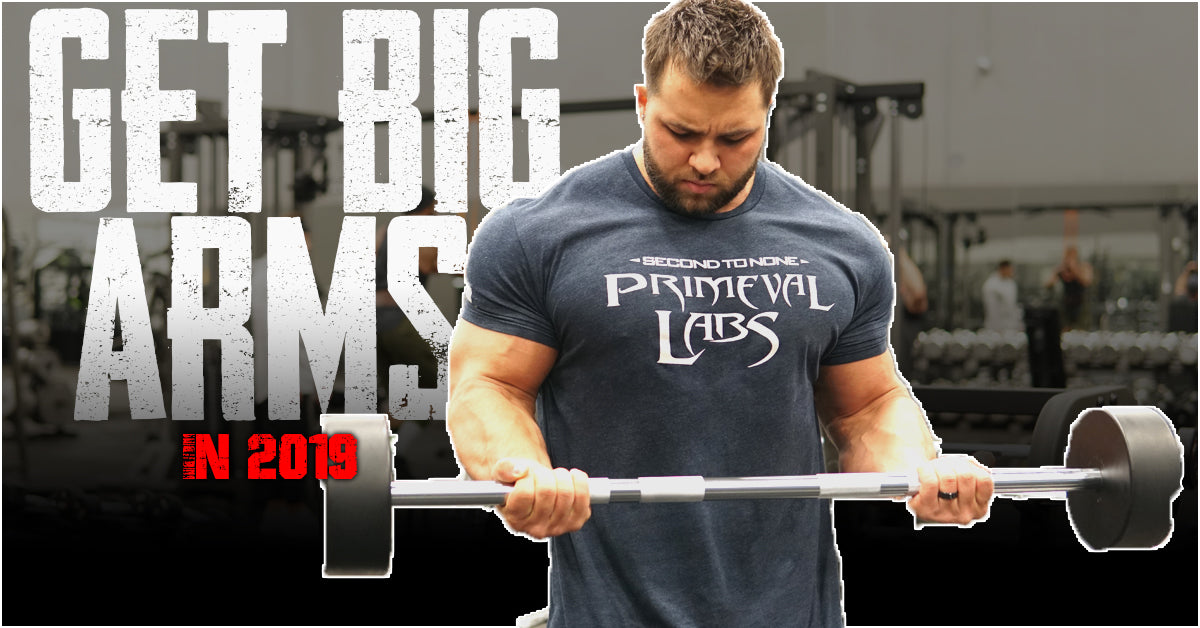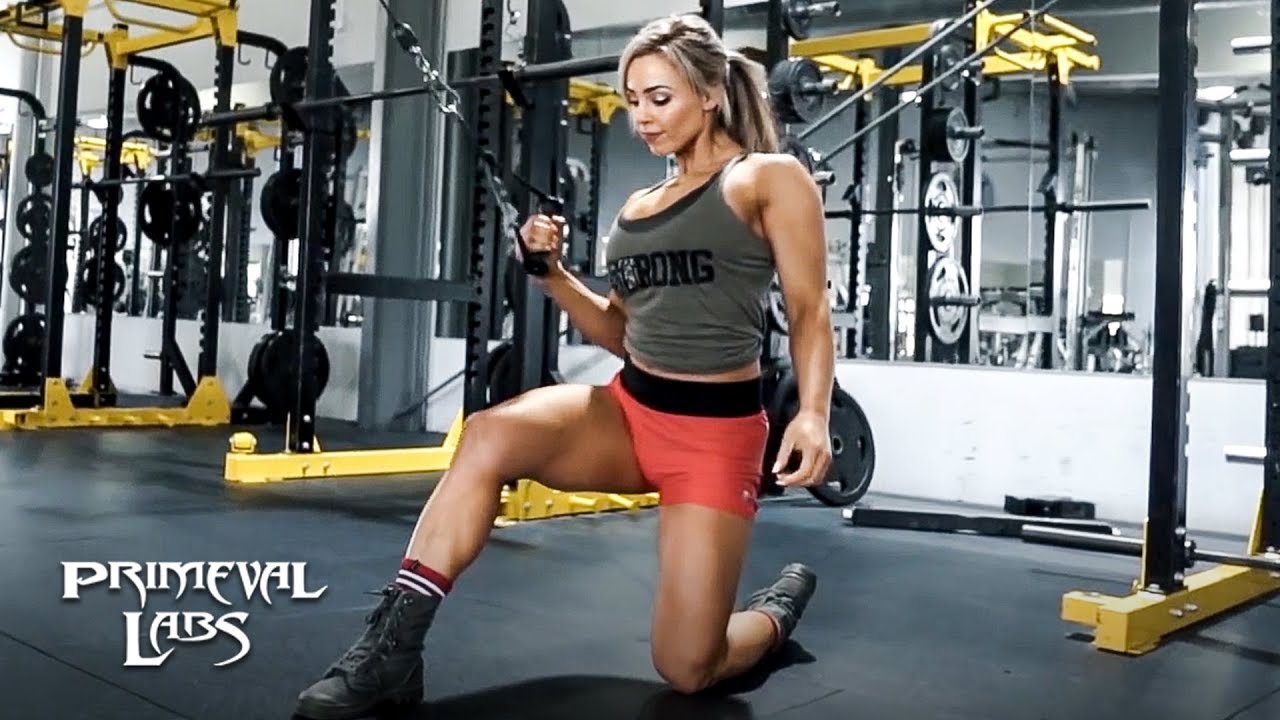Back Rows - Five of the Best Row Exercises to Add to Your Routine
If you want to know why back rows are the go-to exercise for adding thickness, muscle, and strength to your back, you will want to read this article.
Ahead, we’ll show you five of the best row exercises that you can implement into your current training program for building lean muscle mass.
But, before we get to those variations, let’s discuss a little bit more about why you should be prioritizing rowing in your training.
Why Horizontal Pulls Are Better than Vertical Pulls
According to many strength and conditioning coaches, including Dr. John Rusin, athletes should prioritize horizontal pulling exercises like rows over vertical pulling exercises (i.e. pull ups) in order keep their shoulders healthy.
Dr. Rusin has even remarked:
“If you aren’t rowing two or three times as much as you are pulling up you are leaving your shoulder health to chance.”
In other words, horizontal pulls like rows should be the backbone of your back workouts. Go hard and heavy with all manner of rows at the outset of your workout, and save the pull-ups, chin-ups, and lat pulldowns for the end of your workout.
Your joints will be better prepared for the work, and you can get away with lighter weight than if you started your workout with vertical pulls, which is a big win for your long-term shoulder health.

With that being said, let’s get to the best back row exercises for building a thick, wide back.

The Five Best Row Exercises for a Thick Back
While the barbell row is commonly viewed as the best row variation for developing a thick back, the simple truth of the matter is that most people don’t do them properly at all. They rely heavily on momentum and body english to get the weight up. Then, on the descent they let gravity do the work and miss out on the eccentric part of the movement, which essentially cuts the muscle-building capabilities of the row in half!
The standard barbell row can place undue stress on the low back, and if you’re already doing lots of heavy squatting and deadlifts, there are a number of ways to work the upper back without having to add to the strain you’ve already placed on your lower back during the rest of your training sessions.
Now let’s discuss the many ways you can incorporate a back row exercise into your training:
1 Arm Dumbbell Row
If there’s one back move to do, it’s the unilateral (one arm) dumbbell row. It’s a favorite of the Primeval family of athletes due to its large range of motion and ability to safely overload the muscles of the upper back.
There are multiple grips (pronated, supinated, neutral) that you can use when performing the dumbbell row as well as different angles you can pull so as to emphasize different areas of the upper and middle back.
To perform the 1 arm dumbbell row with your right arm:
Set up for the movement by placing your left knee and hand on a flat bench. Your right foot should remain on the ground. Grab a dumbbell with your right hand with your hand directly under your shoulder. With a flat back and tight core, retract the shoulder and row the dumbbell (initiating the movement at the elbow) to your hip.
Squeeze at the top and slowly lower the dumbbell to full extension. Once all of your reps are completed on one side, rest for 30 seconds and repeat on the second side.
1-Arm Landmine Row
The one-arm landmine row allows for maximum tension on the muscles of the upper back while providing excellent stabilization for the shoulder. This results in a lift that is great for building muscle as well as preserving shoulder and spine health.
Use a landmine attachment or set one end of a barbell in the corner and load the other side with plates no larger than 25 pounds.
Note: this doesn’t mean only putting 25 pounds on the bar, you can use multiple 25-pound plates to accumulate a load needed for the lift. We’ll explain more down below.
To perform the landmine row:
Stand with your feet hip-width apart with the collar of the barbell on your right side. Hinge at the hips and knees and reach down to grab the collar of the bar with your right hand. Place your left hand on your left thigh, brace your core, and initiate the row by driving your elbow back so that your hand finishes by your right hip. Hold for a count of one and slowly lower the weight until your arm is straight.
Meadows Row
Made famous by the Mountain Dog, John Meadows, the Meadows row is a unique variation of the single-arm landmine row that targets more of the upper back, rear delts, and rhomboids than typical rows that have you using a neutral grip and pulling your elbows close to your sides.
To set up for the Meadows row:
Place one end of a barbell in a landmine machine (or in the corner of the gym if you don’t have a landmine apparatus) and load the “free” end with plates, using any plates up to and including 25-pound plates.
Using 45-pound plates leads to a reduced range of motion, due to the starting position of the bar being higher off of the ground. Using 25-pound plates and smaller ones allow for increased range of motion, which is ideal for maximizing tension on the back.
When performing the Meadows row starting on your right side, stand with your feet hip-width apart, with the collar of the barbell in front of your right foot. Hinge at the hips and bend the knees to allow you to grasp the collar of the bar in your right hand using a pronated grip.
Planting your left hand on your thigh, drive your right elbow back so that your hand finishes just below your armpit.
Slowly lower the weight to its starting position and repeat for reps before training the other side.
T-Bar Row
T-Bar rows can be performed using a landmine setup detailed above, or if your gym has a T-Bar rig, you can take advantage of the additional leverage and chest support as well as the decreased amount of stabilization and loading in the lumbar spine.
Similar to the Meadows Row, make sure to use 25 plates and smaller ones for your lifting loads. Using the larger plates reduces the range of motion your arms move, thereby reducing the amount of work and time under tension of your back muscles. Utilizing quarters on down ensures you can sufficiently load up the bar and go through a full, complete, and even extended range of motion.
To perform the T-Bar row on the T-Bar rig:
After loading the bar, position yourself chest down on the t-bar row machine. Grab hold of the T-Bar handles, brace your core, tighten your lower body, and make sure your neck is in a “packed” position.
Keeping your arms straight, lift the bar off the rig and lower slowly until your arms are fully extended. Set the shoulders and initiate the pull from your elbows. Continue driving back until your elbows are at your sides and you are squeezing your shoulder blades together. Hold for a count of one and slowly lower under control to the starting position.
Note: Depending on the particular t-bar rig you’re using or if doing it with the landmine set up, your torso angle can range from 15-45 degrees above parallel.
Incline Chest-Supported Dumbbell Row
The incline bench chest-supported row is a fantastic row variation that allows you to really load up the weight, yet not worry about excessive body english or loading on the spine. Traditional barbell lifts, including the barbell bent-over row, are usually limited by your ability to maintain spinal alignment rather than the working muscles actually reaching failure. In these instances, you don’t get as effective of a training effect as you could have you made the limiting factor the intended working muscles rather than your low back and erectors.
To perform the incline chest-supported dumbbell row:
The setup and execution are similar to a T-bar row, with your chest supported, pulling your elbows to your sides. The difference here is that you’re lying on an incline bench and using dumbbells rather than the T-bar.
Batwing Row
Similar to the chest-supported incline dumbbell row, the batwing row has you in the prone position. Only here, your body is parallel to the ground. The same proper rowing rules apply to the batwing row as all other rows.
To perform the batwing row:
Lie face down on a flat bench. Dumbbells should be on the floor and arms should be slightly bent, directly underneath your shoulders. Depress your shoulders, and row the weights until your thumbs are near your armpits. Hold the peak contraction for a count of one before slowly lowering the weights under control. Repeat for desired reps.
Seated Cable Rows
The seated row is yet another fantastic rowing variation that provides for constant tension throughout the full range of motion, as opposed to other free weight rowing variations where it’s easier to lose tension. One thing to guard against with seated cable rows is that it’s incredibly easy to get into the “whole body heave-ho” with the row, where your upper body is swinging forward and backward each rep.
A little protraction and extra stretch at the start of the movement is fine, but there’s no need to hinge completely forward and do a full back bend when your moving the weight. Save that for the gym bros who want to ego lift rather than get in an effective workout.
Inverted Rows
Also known as horizontal pull ups or “Australian pull ups”, inverted rows are the horizontal pulling equivalent of the pull up or chin up. And just like the pull up, you can use any number of hand positions, hand placements (wide grip, narrow grip, pronated, supinated, neutral, etc.), and body angles to emphasize different portions of the back.
The inverted row also serves as a great bodyweight back building exercise to increase strength which can translate to improving your performance on vertical pull ups.
To perform the inverted row:
Adjust the bar (or trx straps) to a height somewhere between mid thigh and waist height. The exact positioning of the bar will depend on your arm length and back strength, so some trial and error will be required your first time attempting the inverted row.
Grasp the bar just outside of shoulder width using a pronated (overhand) grip with you legs extended in a straight line in front of you. Remember to keep your core engaged and your body rigid through the entire range of motion.
Retract your shoulders and pull with your elbows, rowing until your chest comes into contact with the bar. Squeeze at the top for a count of one, and slowly lower your body back to the starting point.
Row to Grow!
Start prioritizing upper back rows in your training today and see just how quickly you can forge an impressive upper back.
And, if you need some extra help crushing those back rows during your workouts, there’s Mega Pre Red.
Mega Pre Red is a hard-hitting, high-energy pre-workout that also enhances workout performance and the all-too-important mind-muscle connection. Back training is hard, and finding the motivation to train as hard as you need to isn’t always easy. Mega Pre Black ignites your senses and fuels the fire inside of you to get in the gym and go ham on the iron.
Click here to try Mega Pre Red today and start rowing to get your back growing!
References
-
Lehman GJ, Buchan DD, Lundy A, Myers N, Nalborczyk A. Variations in muscle activation levels during traditional latissimus dorsi weight training exercises: An experimental study. Dynamic medicine : DM. 2004;3:4. doi:10.1186/1476-5918-3-4.










Leave a comment
This site is protected by hCaptcha and the hCaptcha Privacy Policy and Terms of Service apply.